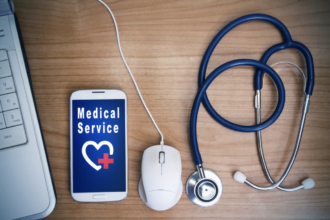Until recently, most medical procedures required a lengthy hospital stay and a bill to match, but changes in surgical techniques have led to many of these procedures being moved to an outpatient facility. What does this shift to outpatient car mean for your hospital and the medical community as a whole? Inpatient vs. Outpatient Here’s the difference between inpatient and outpatient care: You’re classified as inpatient if you are admitted to the hospital by doctor’s order, or are undergoing a procedure that requires you to stay in the hospital for any length of time. Outpatient, on the other hand, means that you haven’t been admitted, are visiting an emergency room, or are undergoing a medical procedure that doesn’t require you stay in the hospital. Basically, you’re considered outpatient if you haven’t been formally admitted to the hospital or if you stay overnight for observation. Is one particularly better than the other? Are you actually better off with an inpatient treatment plan? Can utilizing outpatient services treat you as effectively? Inpatient Pros and Cons Traditional inpatient treatments are still utilized today, but the number of procedures completed in this manner is dropping due to the rise of outpatient procedures. The pros of inpatient include:
- 24 Hour Care and Supervision: This is vital for high-risk procedures and other similar situations, and it allows patients to access help if something goes wrong before or after the procedure.
- Aid With Recovery: If the procedure completed during the inpatient stay requires rehabilitation, physical therapy or any other follow-up procedure, all of these can be completed without unnecessary travel for the patient.
- Constant Monitoring of Vitals: Vital signs are checked regularly by staff. They are also monitored by floor-based telemetry, which can alert nurses and doctors if there are any irregularities.
- Support and Community: Many types of inpatient treatment encourages patients to form a community as a means of therapy and support. It’s much harder to form this kind of community in an outpatient setting.
The cons of inpatient include:
- Cost: Inpatient stays can be extremely expensive. Some hospitals mark up prices by up to 1,000%, much of which often isn’t covered by insurance plans.
- Exposure to Pathogens: While hospitals try their hardest to keep the spread of pathogens to a minimum, these locations are a prime breeding ground for dangerous and antibiotic-resistant pathogens.
- Discomfort: It can be hard to relax and focus on recovery if your roommate is loud or has noisy visitors.
Outpatient Pros and Cons Outpatient treatment programs are on the rise, but they may not always be the best option for treatment. The pros of outpatient include:
- Cost: Outpatient procedures are often much less expensive than their inpatient counterparts because the patient is only paying for the procedure itself. There are no additional charges you would find during an inpatient stay.
- Recovery: Patients are able to recover in the comfort of their own homes, which makes it easy to relax and focus on getting better. Additionally, they aren’t exposed to any pathogens or viruses that might hamper their recovery.
- Low-Risk Procedures: Most outpatient programs and treatments are low risk and can be completed easily. Recovery for outpatient procedures is usually much faster and easier as well.
- Convenience: It’s simply easier for people to have their procedures completed in an outpatient setting, rather than worrying about an inpatient treatment. Some plastic surgeons, for example, design their offices to include a surgical suite, so procedures can be completed right in the office.
The pros of outpatient include:
- No Immediate Access to Help: If there are any problems or complications during recovery, the patient would have to be transported to a hospital rather than having immediate access to the help they might need.
- Abuse of Privileges: Some doctors have abused the concept of outpatient treatment by performing procedures that they might not have the privilege to perform in the local hospital. This puts patients at risk, even if the doctor is able to successfully perform the procedure.
- Lack of Support: Some diagnoses require a high level of constant support for success that is very hard to achieve in an outpatient setting.
Final Thoughts Weighing the pros and cons of both inpatient and outpatient treatment options, it’s hard to determine which one is the better option. When it comes right down to it, there are too many variables and too many different types of procedures to make a general statement one way or the other. The best advice is to carefully assess each situation and make an informed decision with the assistance of the patient. Take into account the patient’s medical history and any current or previous medical problems that could potentially affect the outcome of the procedure, and make your decision accordingly. Patients with compromised immune systems, for example, could benefit from an outpatient procedure because recovering at home will prevent them from being exposed to any potential viruses or diseases while in the hospital. A patient who is at high risk for complications, on the other hand, should be treated in an inpatient facility. Rehabilitation cases, especially those of drugs and alcohol addiction, should also be taken on a case by case basis. Will your patient benefit from an inpatient stay, or would they be better suited and better treated by going home after each session? As a medical professional, the shift toward outpatient treatment could mean one of two things for you and your hospital. Depending on your specialty, you can follow the shifting tides and begin outpatient treatment for your patients. If that is not an option, you will likely find fewer patients being admitted for procedures that are now being treated as outpatient treatments. Overall, the shift toward outpatient treatment is a good thing for the medical community as long as it is handled correctly. Informed decisions are the key. Make sure you’ve covered all your bases before you make the change, and it will benefit you as well as your patients.








